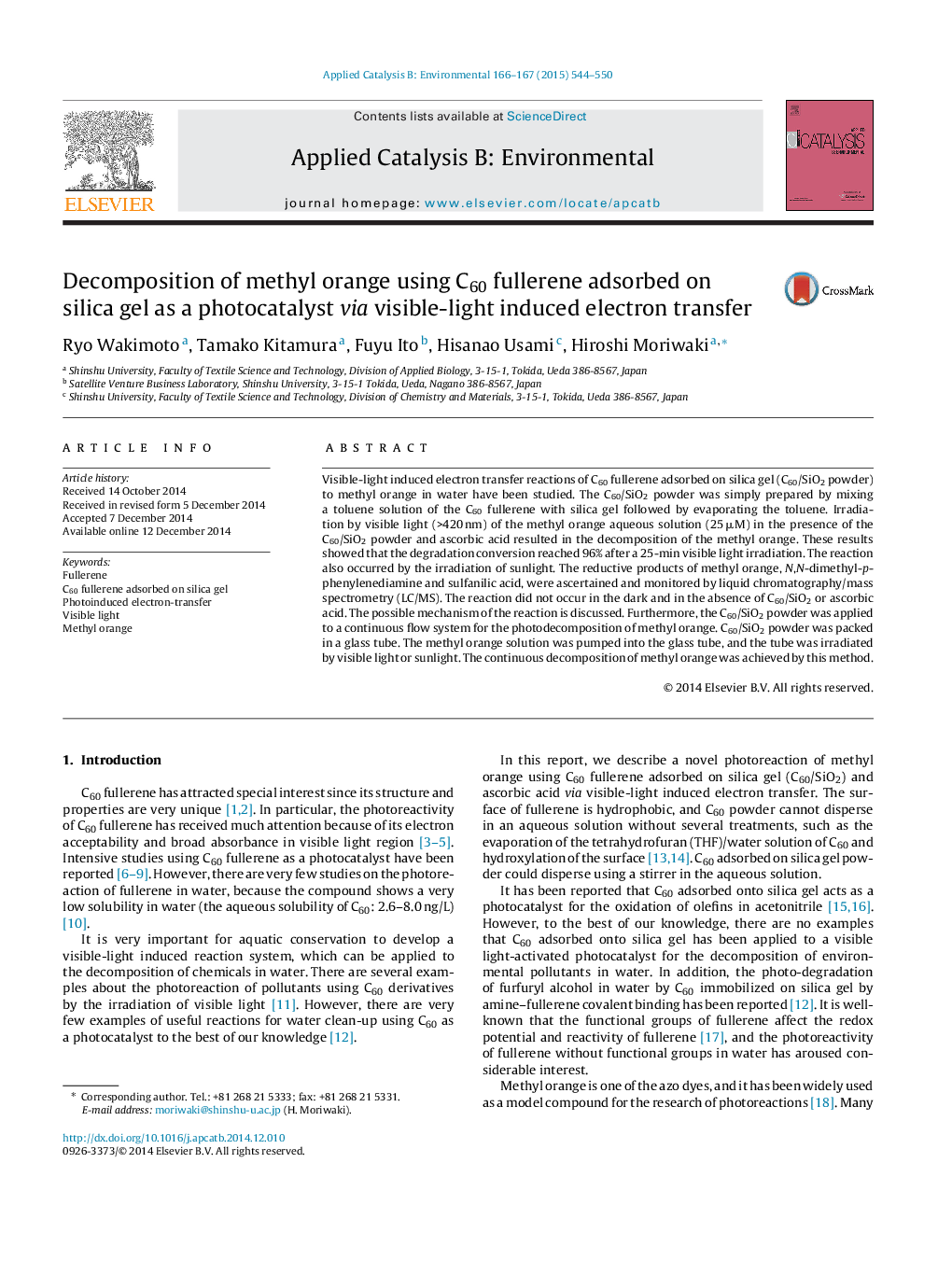| Article ID | Journal | Published Year | Pages | File Type |
|---|---|---|---|---|
| 45749 | Applied Catalysis B: Environmental | 2015 | 7 Pages |
•A photocatalyst, C60 adsorbed on silica gel (C60/SiO2), was applied to water purification.•Efficient decomposition of methyl orange with the catalyst under visible light was achieved.•The continuous flow system for the reaction using a column packed the C60/SiO2 powder was developed.•The catalyst contributes to the development of the water purification without using fossil energy.
Visible-light induced electron transfer reactions of C60 fullerene adsorbed on silica gel (C60/SiO2 powder) to methyl orange in water have been studied. The C60/SiO2 powder was simply prepared by mixing a toluene solution of the C60 fullerene with silica gel followed by evaporating the toluene. Irradiation by visible light (>420 nm) of the methyl orange aqueous solution (25 μM) in the presence of the C60/SiO2 powder and ascorbic acid resulted in the decomposition of the methyl orange. These results showed that the degradation conversion reached 96% after a 25-min visible light irradiation. The reaction also occurred by the irradiation of sunlight. The reductive products of methyl orange, N,N-dimethyl-p-phenylenediamine and sulfanilic acid, were ascertained and monitored by liquid chromatography/mass spectrometry (LC/MS). The reaction did not occur in the dark and in the absence of C60/SiO2 or ascorbic acid. The possible mechanism of the reaction is discussed. Furthermore, the C60/SiO2 powder was applied to a continuous flow system for the photodecomposition of methyl orange. C60/SiO2 powder was packed in a glass tube. The methyl orange solution was pumped into the glass tube, and the tube was irradiated by visible light or sunlight. The continuous decomposition of methyl orange was achieved by this method.
Graphical abstractFigure optionsDownload full-size imageDownload as PowerPoint slide
